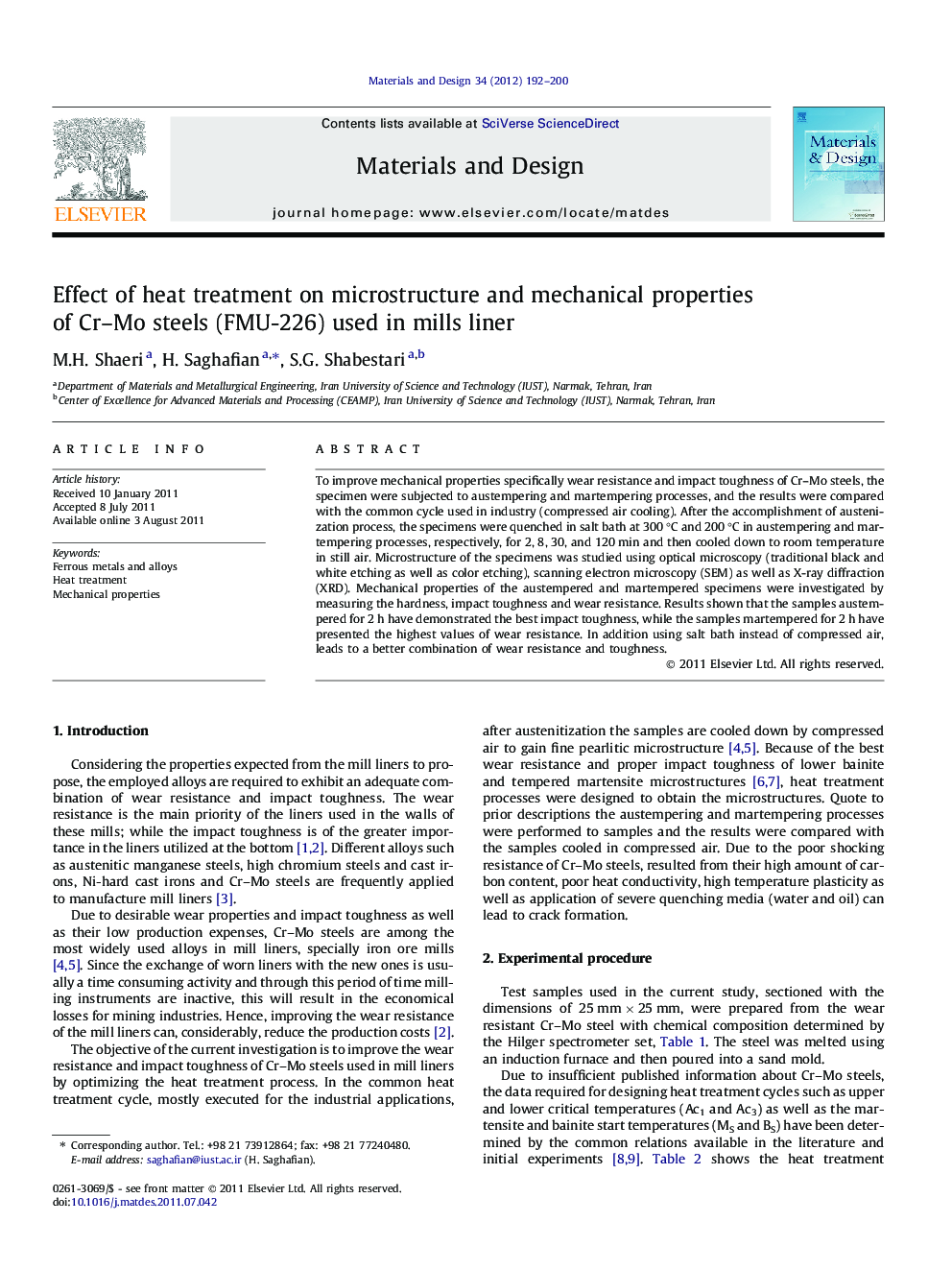| Article ID | Journal | Published Year | Pages | File Type |
|---|---|---|---|---|
| 831029 | Materials & Design (1980-2015) | 2012 | 9 Pages |
To improve mechanical properties specifically wear resistance and impact toughness of Cr–Mo steels, the specimen were subjected to austempering and martempering processes, and the results were compared with the common cycle used in industry (compressed air cooling). After the accomplishment of austenization process, the specimens were quenched in salt bath at 300 °C and 200 °C in austempering and martempering processes, respectively, for 2, 8, 30, and 120 min and then cooled down to room temperature in still air. Microstructure of the specimens was studied using optical microscopy (traditional black and white etching as well as color etching), scanning electron microscopy (SEM) as well as X-ray diffraction (XRD). Mechanical properties of the austempered and martempered specimens were investigated by measuring the hardness, impact toughness and wear resistance. Results shown that the samples austempered for 2 h have demonstrated the best impact toughness, while the samples martempered for 2 h have presented the highest values of wear resistance. In addition using salt bath instead of compressed air, leads to a better combination of wear resistance and toughness.
► Austempering and martempering of Cr–Mo steel conducted at different holding times and temperatures. ► Microstructures characterized by optical microscope (color etching), SEM and XRD. ► Wear, impact toughness and hardness of the specimen were measured. ► Austempered specimens showed better combination of wear resistance and impact toughness. ► By using the austempered and martempered liners in mills, the life time of the liners could be prolonged.
